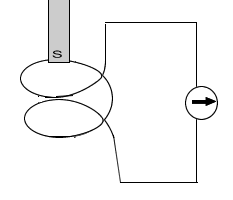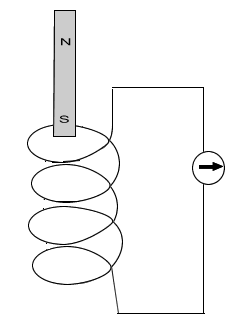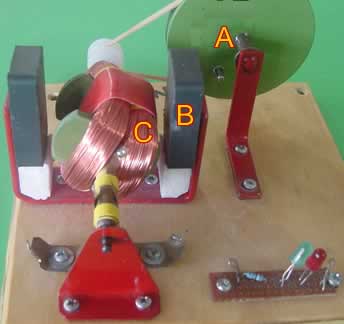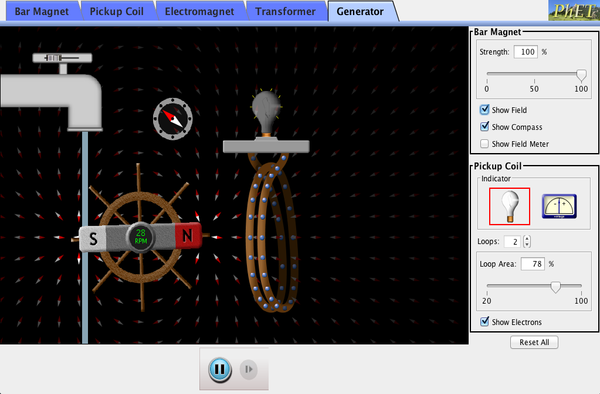In 1831 Michael Faraday an
Englishman and Joseph Henry from the United States both showed that a
current can be produced in a loop of wire by simply passing a magnet in
or out of the loop. No other source is needed, simply a coil of wire and
a magnet. The amount of current produced depends on how quickly the magnet
is moved in and out of the loop and also on the number of loops present.
This phenomenon is summarized in a statement called Faraday's Law.
This law states:
"The induced voltage in a coil is proportional to the product
of the number of loops and the rate at which the magnetic field changes
in these loops."
It doesn't matter which moves, the coil or the magnet. Generators rotate coils of wire around a stationary magnetic field, as discussed below.


When coils of wire are rotated in a stationary magnetic field a current is produced. This arrangement is called a generator.
A simple generator is shown on the right. A mechanical force "A" is provided to spin the coils of wire "C" between the magnets "B".
Click
to see 120kb movie of how the generator works. The movie shows a generator
connected to an LED.
Click on the interactive on the right to open and view.
Complete the worksheet after opening the interactive animation.

Explain using Faraday's Law why so many coils of wire are needed on the simple generator above and why they must be rotated quickly?
Click to see 120kb video. The generator is connected to an ammeter. Notice how the needle is deflected as the generator is producing a current. Why is the current produced by a generator known as alternating current(ac)?
